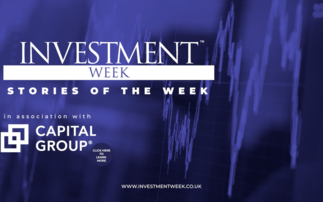Industry Voice: Over the past ten years, investors have operated in an environment characterised by extremely accommodative and unconventional monetary policy.
This stemmed from the global financial crisis and its aftermath, when central banks deemed such measures necessary to prevent a financial meltdown. Historically low interest rates, coupled with quantitative easing to pump liquidity into the economy, have served to provide a supportive environment for bond markets.
Interesting times
Now, however, things are changing. Central banks worldwide are moving to raise interest rates and withdraw liquidity. The US Federal Reserve hiked rates three times in 2018, with more rate rises signalled for 2019. The European Central Bank is withdrawing liquidity, ceasing its quantitative easing operation with effect from the end of 2018.
On top of that, markets are likely to be plagued by bouts of heightened volatility. Trade tariff wars between the US and China (and others); Brexit uncertainty and concerns over the potential slowdown in world economic growth - are all factors which are likely to lead to periodic "shocks".
This means returns from bond markets are set to become more volatile, making it harder to achieve a genuinely attractive long-term return without knowing when and where to embrace risk. We are certainly living in interesting times.
A flexible approach
Nevertheless, opportunities still exist. It's simply a matter of casting the net a bit wider and having flexibility in your approach. Most bond funds focus on a particular kind of bond investment. Typically, their performance is measured against a benchmark which aims to represent the average performance of a sector or asset class.
This is all well and good if your portfolio needs exposure to a specific element within an asset class. But investors who are not restricted to one segment of the credit universe - who are able to adopt a flexible approach to corporate bond investment - clearly have an advantage. Different economies at different stages of their economic cycles, and with different valuations, bring opportunities to protect capital and secure attractive returns. At a fund level, mandates with the greatest flexibility are likely to produce the best outcomes in this environment.
Aberdeen Standard Investments has developed the Total Return Credit Fund to offer such flexibility. The Fund aims to deliver a compelling return by investing without the constraints of a benchmark. A particular feature of the Total Return Credit Fund is that we do not restrict ourselves to any given geography, credit asset class or maturity profile. We invest wherever we believe there are opportunities and select our highest conviction ideas from across a broad investment universe that includes not only mainstream investment grade bonds, but also high yield credit, emerging market debt and asset-backed securities.
Protection when the market falls
However, the unique proposition of the Total Return Credit Fund is that it aims not only to deliver an enhanced return from global credit, but also to reduce volatility and provide drawdown protection.
Mindful of the prevailing conditions of heightened volatility, these built-in protection strategies utilise a risk dampening toolkit to provide drawdown protection from adverse market conditions. Our three pillars of drawdown protection are: credit exposure; insurance; and portfolio dampeners.
We will adjust overall exposure to credit based on our macro views - where we are in the credit cycle, and how compelling is the risk premium. This position is adjusted primarily through credit derivatives.
Our insurance pillar will benefit fund performance when the market hits periods of risk aversion and volatility spikes. Recent examples have included the following insurance positions:
• benefits when volatility in the US Treasury market increases, irrespective of the direction of US interest rates;
• benefits from an increase in European equity market volatility; and
• "put" options on the US S&P 500 Index, allowing us to profit if the S&P500 Index falls.
We invest in a number of individual portfolio dampening strategies, each with a low or negative correlation with the portfolio's specific credit exposure. Hence, if credit markets experience negative returns, we would normally receive a positive contribution from this part of the portfolio. Examples might include currency trades, inflation trades, or interest rates in developed markets.
Positions within this part of the portfolio are drawn from across the fixed income universe. They are not necessarily expected to deliver a positive return in any macroeconomic environment; rather, they work mainly to diversify credit risk in the portfolio and to provide additional downside protection. The aim is to mitigate the impact of falling markets, but without adversely affecting returns in a rising market.
While our downside protection strategies provide a valuable cushion during periods of market stress, credit selection is the primary driver of the Fund's returns.
In an environment that has undoubtedly become more challenging, corporate bond investors are unlikely to enjoy the stellar returns of previous years. However, for investors with the resource and motivation to dig deep and actively manage risk, global credit still offers plenty of attractive long-term investment opportunities.
Discover more on Aberdeenstandard.com
Capital at risk.











